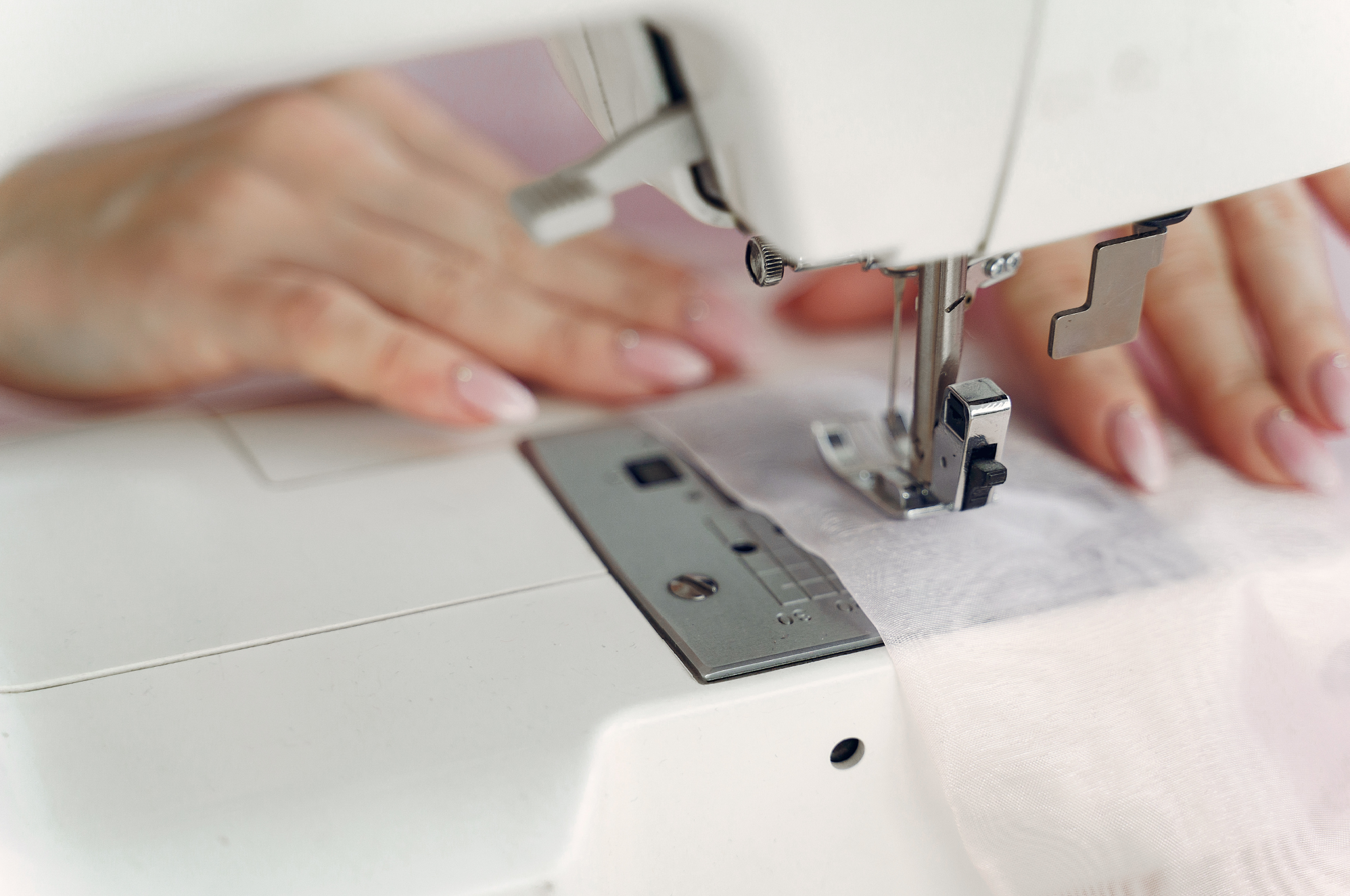Sewing a Straight Stitch: 10 Tips for Perfectly Straight Seams Every Time! 🧵✂️
A straight stitch is one of the most basic yet essential skills in sewing. Whether you're stitching a hem, creating decorative topstitching, or piecing together a quilt, mastering a straight stitch is key. If you've ever struggled with your stitches wandering off course or looking uneven, don't worry—you're not alone! Here are some tried-and-true tips to help you sew perfectly straight stitches every time.
1. Start with the Right Needle 🪡
Using the correct sewing needle for your fabric is crucial. A universal needle is a great choice for most lightweight to medium fabrics, while a heavier needle works better for thicker materials. Be sure the needle is sharp and in good condition; a bent or dull needle can cause your fabric to shift.
Tip: Change your needle regularly—every 8 to 10 hours of sewing or after completing a big project.
2. Set Up Your Machine Properly ⚙️
Make sure your machine's tension and stitch length settings are appropriate for the fabric you're using. For most fabrics, a medium stitch length (2.5 to 3.0) is ideal for straight stitches. Adjusting the stitch length can help you achieve more control and a smoother finish.
Recommended Settings: For fine fabrics, use a shorter stitch length (2.0-2.5), and for thicker fabrics, increase it to 3.0-3.5.
3. Use the Right Presser Foot 👣
The standard presser foot that comes with most sewing machines is perfect for straight stitching. Make sure the foot is securely attached, and the fabric feeds smoothly under it. Some machines have a "straight stitch foot" that offers more visibility and stability for sewing perfectly straight lines.
4. Choose a Good Quality Thread 🧵
A high-quality thread can make all the difference in your stitching. Avoid using old or frayed threads, which can break or cause the stitches to skip. Use a thread that's suitable for your fabric type—cotton thread for natural fibers, polyester for synthetic, or an all-purpose thread for general sewing.
5. Guide Your Fabric, Don’t Push or Pull 🚶♀️
Let the machine do the work! Use your hands to guide the fabric gently through the machine. Pushing or pulling the fabric can lead to uneven stitches and distorted seams. Keep a steady speed, and don’t rush—slow and steady stitching will help you stay on track.
6. Follow the Guide Markings 📏
Most sewing machines have guide lines etched onto the throat plate. These markings help you keep your seam allowance even. Choose a guide that matches your seam allowance (e.g., ¼” or ⅝”) and keep the fabric edge aligned with it.
Pro Tip: Stick a piece of washi tape or masking tape along the guide line you need to follow for extra visibility.
7. Use a Magnetic Seam Guide 🧲
A magnetic seam guide attaches to the throat plate, creating a physical barrier for the fabric edge. It’s an excellent tool for beginners to maintain an even seam allowance and stay on course. Make sure your machine is compatible with magnetic accessories before using one. Read Guide to Magnetic Seam Guides.
8. Keep Your Eye on the Guide, Not the Needle 👀
It’s tempting to watch the needle move up and down, but doing so can cause you to veer off course. Instead, focus on keeping the edge of the fabric aligned with your chosen guide marking. The needle will do its job—trust it!
9. Practice with Scraps First 🧩
Before diving into your project, practice sewing straight stitches on a few fabric scraps. It helps you get a feel for the fabric, thread tension, and machine settings. Plus, it gives you a chance to adjust if needed.
Try This: Use different types of fabric scraps to practice so you can get comfortable adjusting your settings for various materials.
10. Invest in a Walking Foot (Optional) 🚶♂️
If you find yourself struggling with layers of fabric shifting or if you're working with tricky materials (like vinyl or velvet), a walking foot can be a game changer. It evenly feeds the top and bottom layers of fabric through the machine, preventing slippage. Check out: Guide to using a walking foot.
Bonus Tips & Tricks ✨
Use Painter’s Tape for Long Lines: If you need to sew a long, straight line without relying on guide markings, stick a strip of painter’s tape along the fabric to act as your stitching guide.
Slow Down for Curves: Even when sewing straight, there can be tricky sections. Slow down when approaching thicker areas or seams for more control.
Test Different Foot Pressure Settings: Some machines allow you to adjust the presser foot pressure. Lowering the pressure can help keep your fabric from stretching, especially with knits.
Mastering the straight stitch sets a strong foundation for all your sewing projects. With these tips, you'll soon be sewing perfectly straight seams with confidence. Now, let’s get stitching! 🧵✂️
Sew Like a Pro! 🧵✌️ If you’re just getting started or want to polish your sewing skills, check out sewing classes from our affiliates Craftsy and Creativebug. They offer classes tailored to beginners and those looking to perfect their techniques. Use our code “SEWLIKEAPRO” for a discount!
Need Supplies? We’ve got you covered with affiliate links for needles, magnetic seam guides, walking feet, and other sewing essentials.
Happy stitching! 😊

